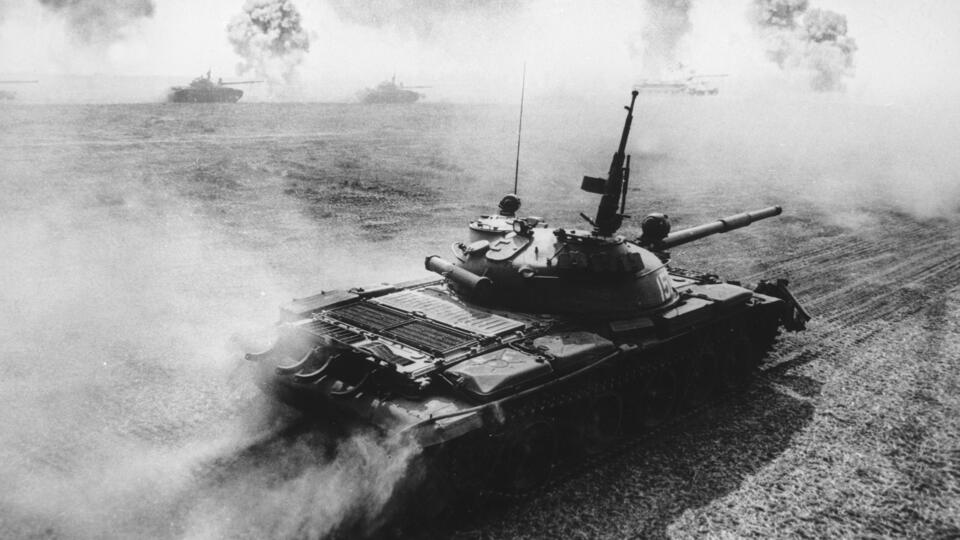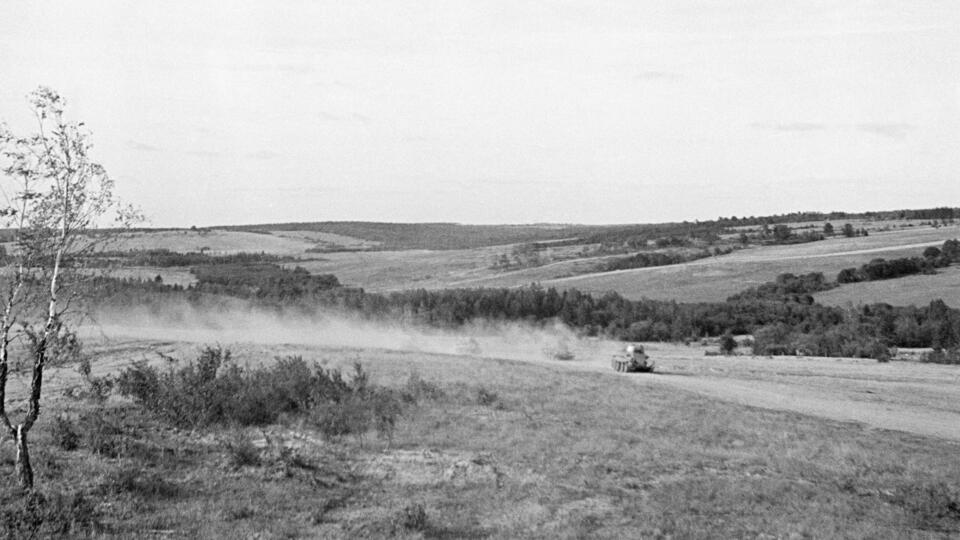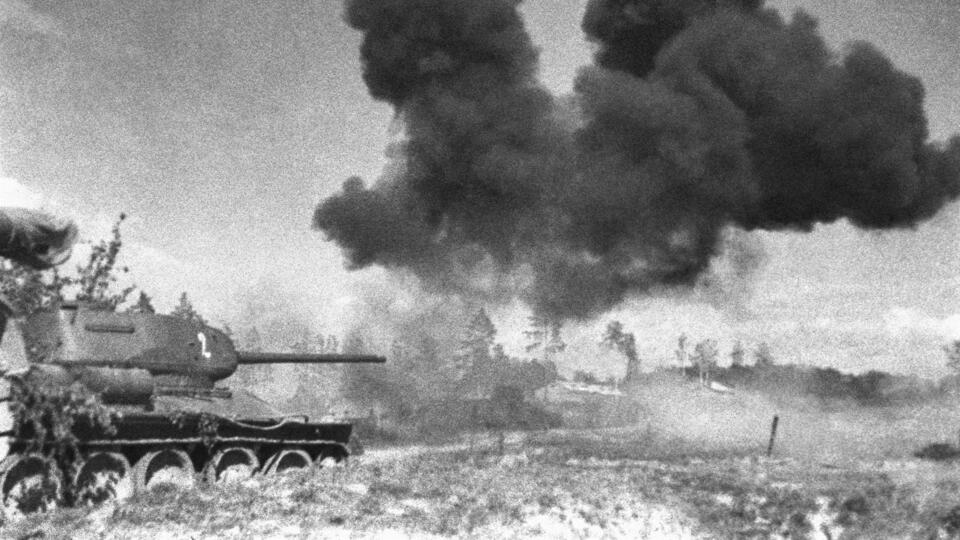Photo: © topwar.ru
The newspaper department of the Russian National Library keeps “Izvestiya” dated August 24, 1941. The issue contains a detailed story about a fantastic tank battle, during which the crew of Senior Lieutenant Zinovy Kolobanov set an absolute record: they destroyed 22 German tanks in an hour and a half and came out of this battle alive. For this feat, Kolobanov was presented with the title of Hero of the Soviet Union, but did not receive it. About the incredible tank battle and the battle path of the ace tanker – in the material REN TV.
The path to officer epaulettes
The story of Zinovy Kolobanov seems completely ordinary for most people of his generation. He was born in 1911 into a peasant family, graduated from the eighth grade of school and went to Nizhny Novgorod to study at an industrial technical school. However, he never received a diploma – the third-year student Kolobanov was called up to serve in the army.
Among the heroes of the Great Patriotic War there are many of those officers who never dreamed of a military career, but by the will of fate put on a uniform and showed themselves from the best side. As a rule, these were people who got into aviation schools or tank schools on Komsomol or party vouchers. Zinovy Kolobanov, a cadet of the regimental school of the 49th Infantry Regiment of the 70th Infantry Division, also received one. The future commander went to Orel – to the Frunze armored school.
The selection of cadets to the Oryol school was very serious, even tough. It was not easy to stand out against their background, but Kolobanov succeeded. He graduated with honors and received the right to choose a place of further service. For him, who had long dreamed of Leningrad, this issue was resolved simply, and in the summer of 1936, the young lieutenant Kolobanov arrived at his duty station in the 3rd separate tank battalion of the 2nd tank brigade of the Leningrad Military District.

Finnish War Lieutenant Kolobanov
Five days before the start of the Soviet-Finnish war of 1939-1940, the officer was appointed commander of a tank company of the 1st light tank brigade, which occupied positions on the Karelian Isthmus. But soon the tanker was transferred to another part – the 20th heavy tank brigade, armed with T-28 tanks.
These heavy, not very fast vehicles, although they were considered at the time of their creation the best medium tanks in the world, by the end of the 1930s they noticeably lost ground: their armor was already insufficient and could not resist the anti-tank artillery, which was saturated with the Finnish defense lines. This threatened with heavy losses in the brigades armed with the T-28. And the 20th brigade was no exception. In less than a year of fighting, Zinovy Kolobanov burned three times in his wrecked tank: first when breaking through the Mannerheim line, then in the battle near Lake Vuoksa and during the raid on Vyborg.
The war ended for Lieutenant Kolobanov by being awarded the Order of the Red Banner and sent to the Kyiv Special Military District.
“Block the roads and stand to the death!”
The Great Patriotic War began for Zinovy Kolobanov on July 3, 1941. Already Senior Lieutenant Kolobanov was transferred to the Northern Front as a company commander of KV heavy tanks of the 1st Tank Regiment of the 1st Tank Division.

On August 8, 1941, the German Army Group North launched an attack on Leningrad.
“It was the second month of the war. After continuous fighting near Pskov, Kingisepp and Luga, the division, holding back the onslaught of the Germans, approached the city of Krasnogvardeisk (now Gatchina). Krasnogvardeisk – an important junction of railways and highways on the outskirts of Leningrad. The situation was extremely unfavorable for us. The units defending the line on the Luga River were cut off from the main forces. Other – with heavy fighting retreated to Leningrad. The reserves sent from the deep rear have not yet arrived. The Nazis advanced in huge formations of tanks, trying to crush our troops and capture Krasnogvardeisk on the move. We used ambushes of heavy tanks, counting on the power of KV”, – recalled the former commander of the 1st Panzer Division Viktor Baranov.
Major General Baranov needed an experienced commander whose unit would be able to carry out a difficult order: to block the roads at the Voiskovitsy state farm leading to Krasnogvardeysk alone. In fact, this was a task for suicide bombers: the tank companies were already incomplete, some of the vehicles were lost in a month and a half of fighting, and intelligence reported the transfer of large enemy tank units.
Only one thing could be opposed to the Germans: the tactics of tank ambushes, which the subordinates of General Baranov mastered to perfection. It was she who brought stunning success to the company of Senior Lieutenant Zinovy Kolobanov and his own crew, making him one of the most productive in the Red Army.
Preparing for a tough fight
Kolobanov’s company had five heavy KV tanks. Since the main task of the tankers was to prevent the breakthrough of German vehicles, the ammunition was collected mainly from armor-piercing shells. The commander distributed the five KVs as follows: two tanks stood on the road from the Luga side, two more – on the road from the Volosov side, and Kolobanov hid his own tank at the crossroads of the highway coming from the Tallinn side.

They prepared carefully for the battle: they dug two disguised caponiers for each car, decided on landmarks for adjusting the shooting. For the enemy from the side of the roads, Soviet tanks were hardly noticeable: they were dug right up the tower.
Subsequent events showed that the calculations of Kolobanov, an experienced tanker who distinguished himself during the Winter War, turned out to be correct.
Incredible battle of Kolobanov’s company
The German offensive began on 20 August. Around noon, the tank crews of Lieutenant Evdokimenko and Second Lieutenant Degtyar saw a column of armored vehicles moving along the Luga Highway. Opening fire, these crews destroyed five tanks and three armored personnel carriers.
Approximately two hours after this, the crew of Kolobanov himself noticed the enemy. He gave the Germans the opportunity to move closer and line up within range of his guns. Further, the commanders acted according to the classical scheme of fighting tank columns, first knocking out the lead vehicles, then walking in the middle, and ending with the trailing ones.
A few minutes later, the entire German column was locked on a narrow road and could no longer hide from the armor-piercing shells of the Soviet tank, with which the crew of Kolobanov literally poured water on the enemy (before the battle, the tankers loaded double ammunition).

Heavy KV blanks easily pierced the light armor of Pz.kpfw 35
Source: Ren
Ray Bly is an accomplished journalist in the field of Automobile. He currently works as a writer at 24 news breaker. With a deep understanding of the Automotive industry and a talent for uncovering the latest developments, Ray’s writing provides readers with insightful and informative coverage of the latest news and trends in the field.
